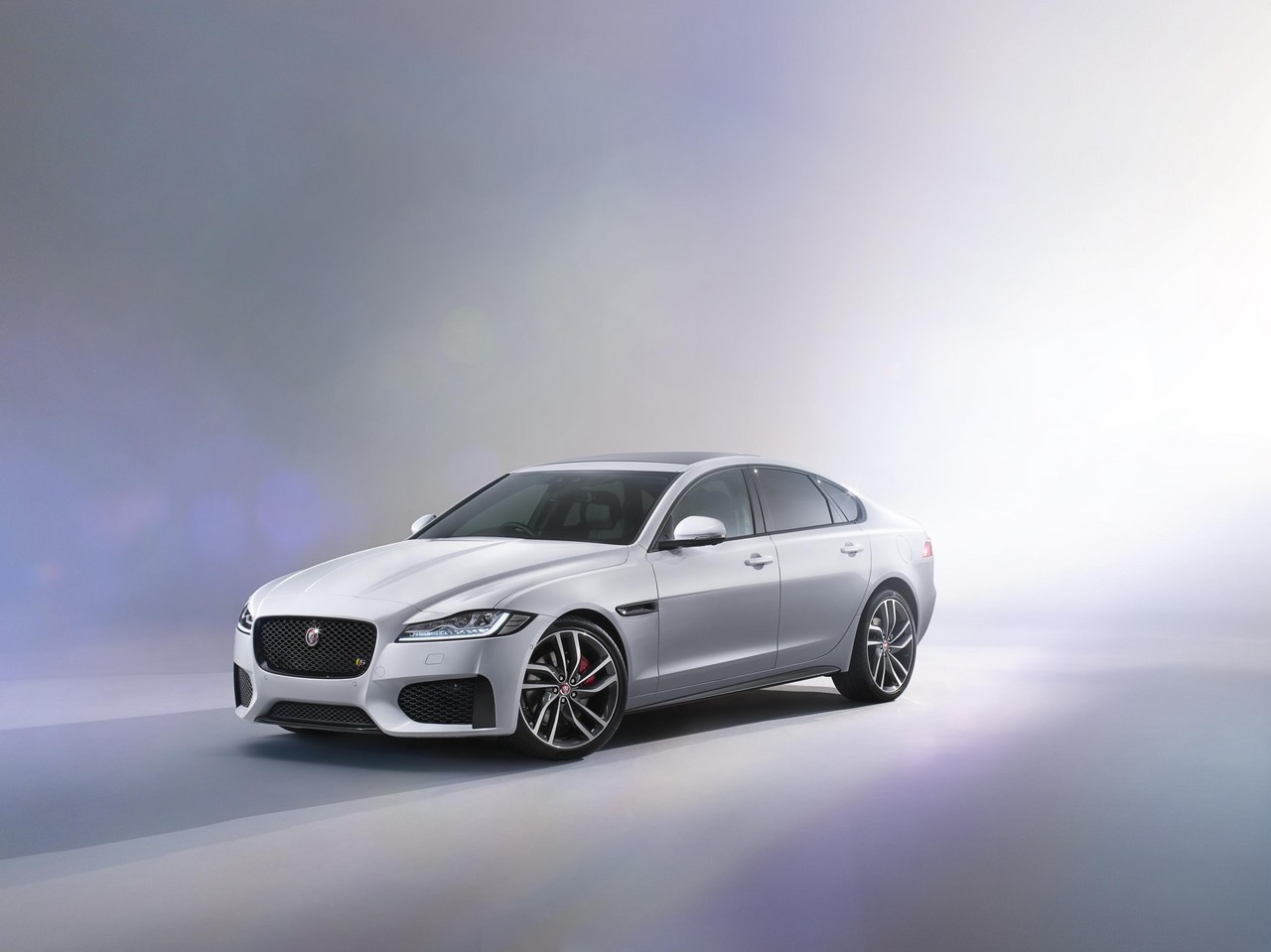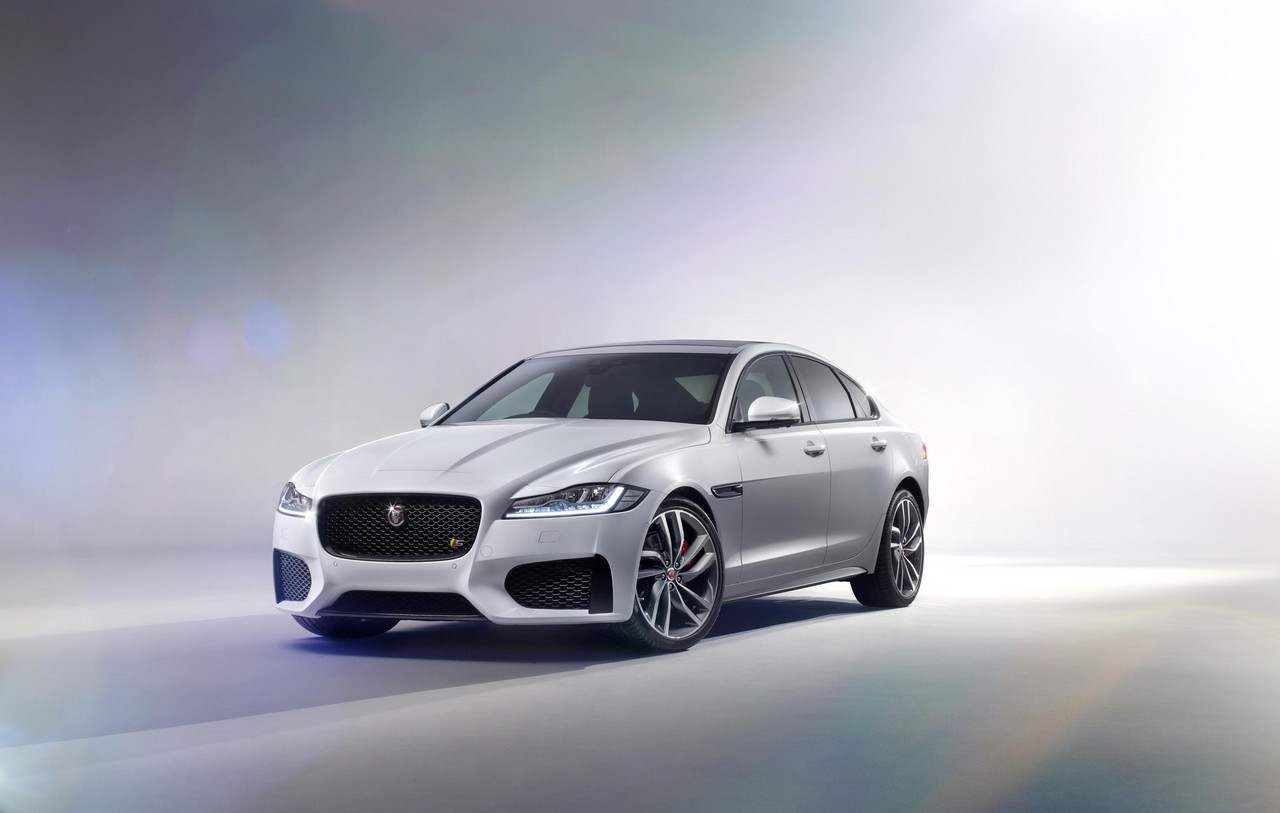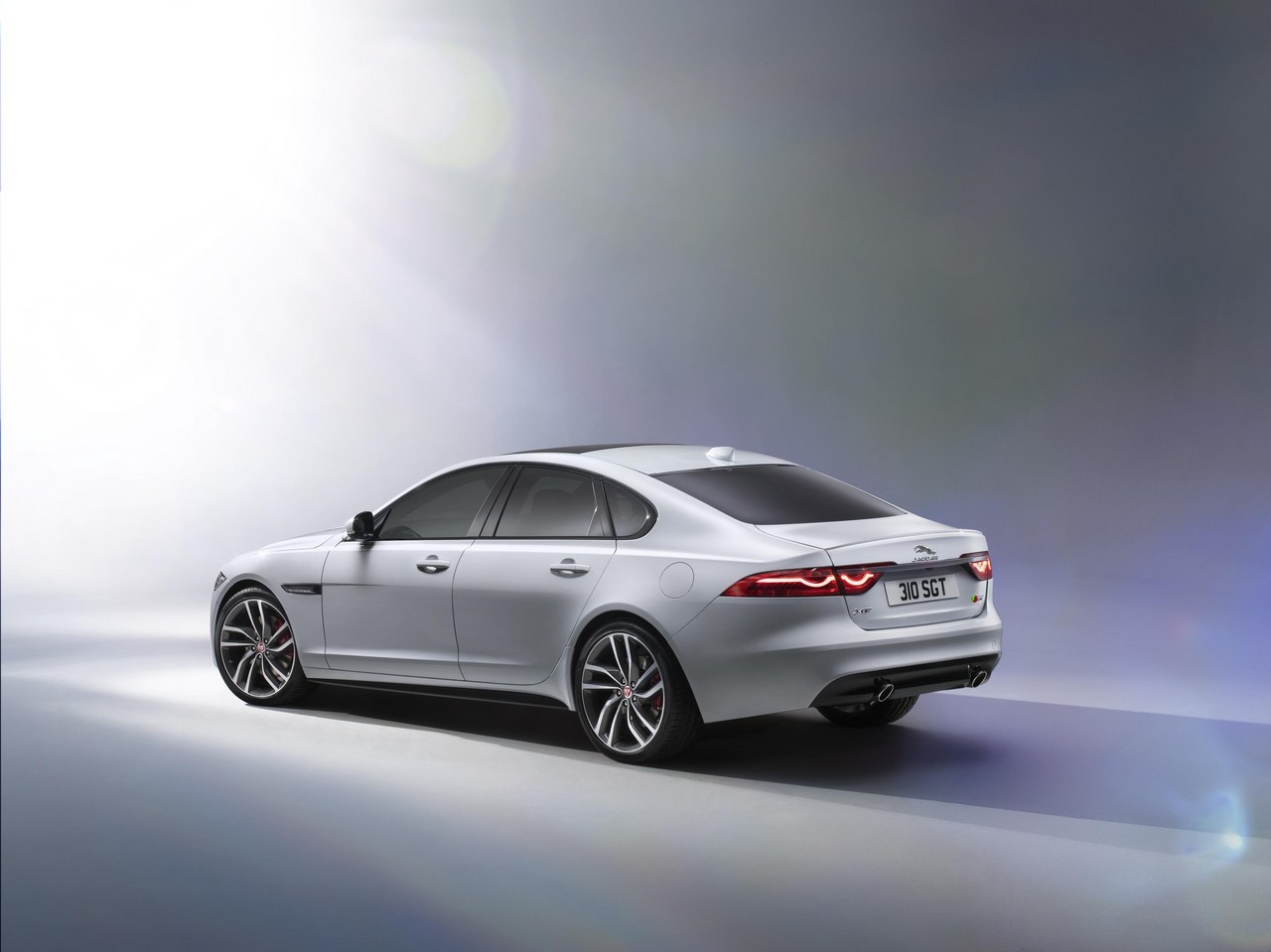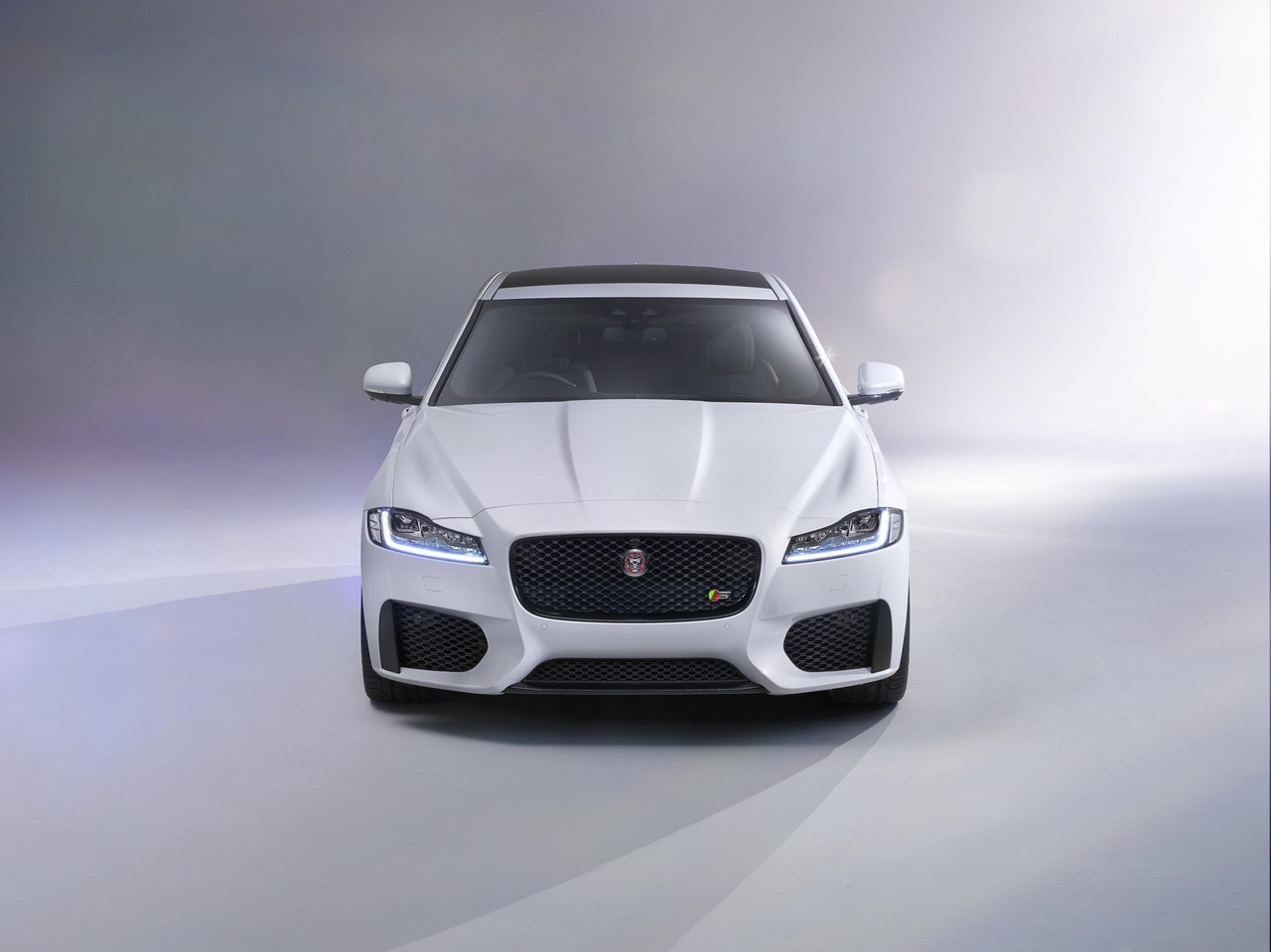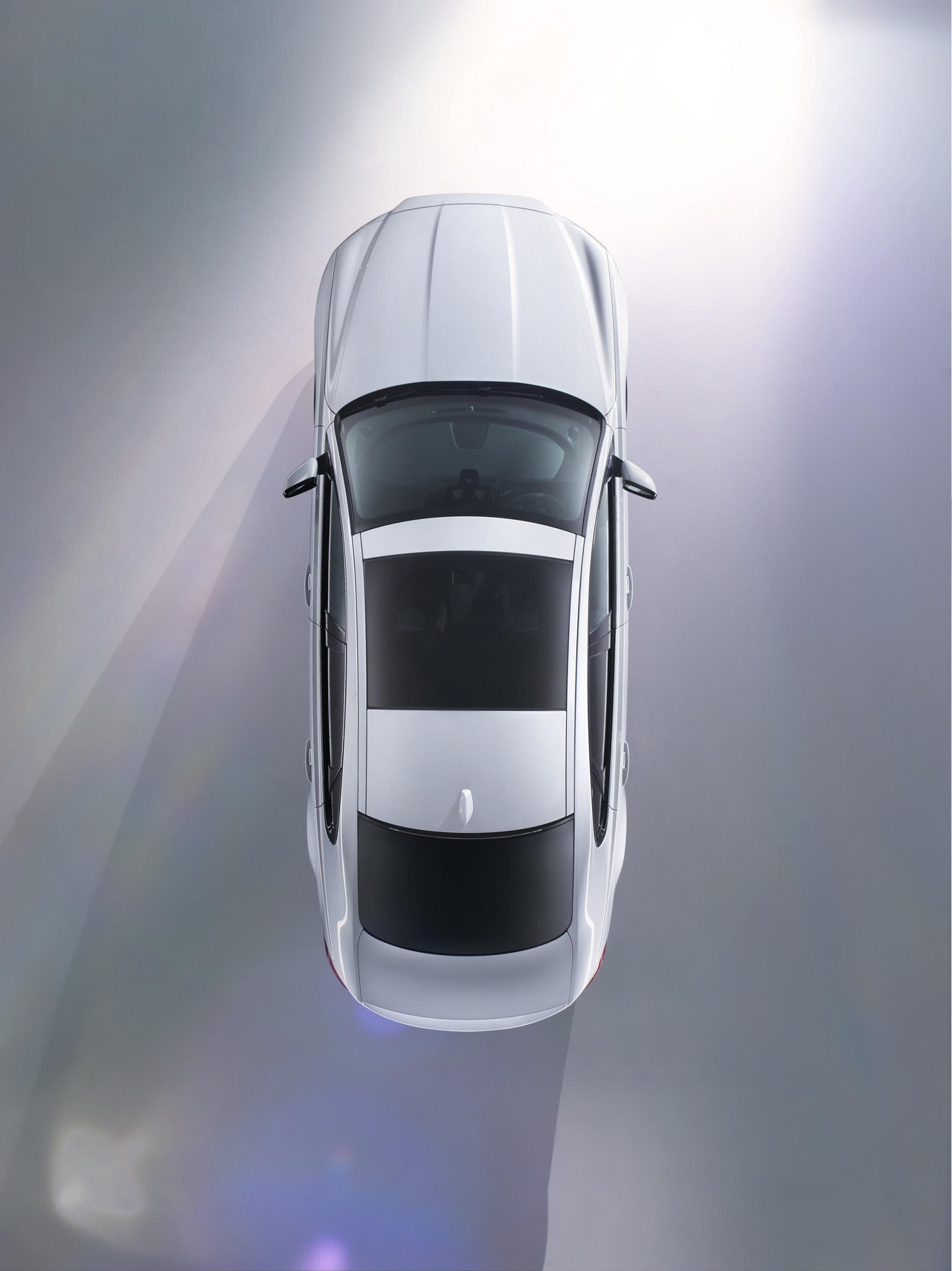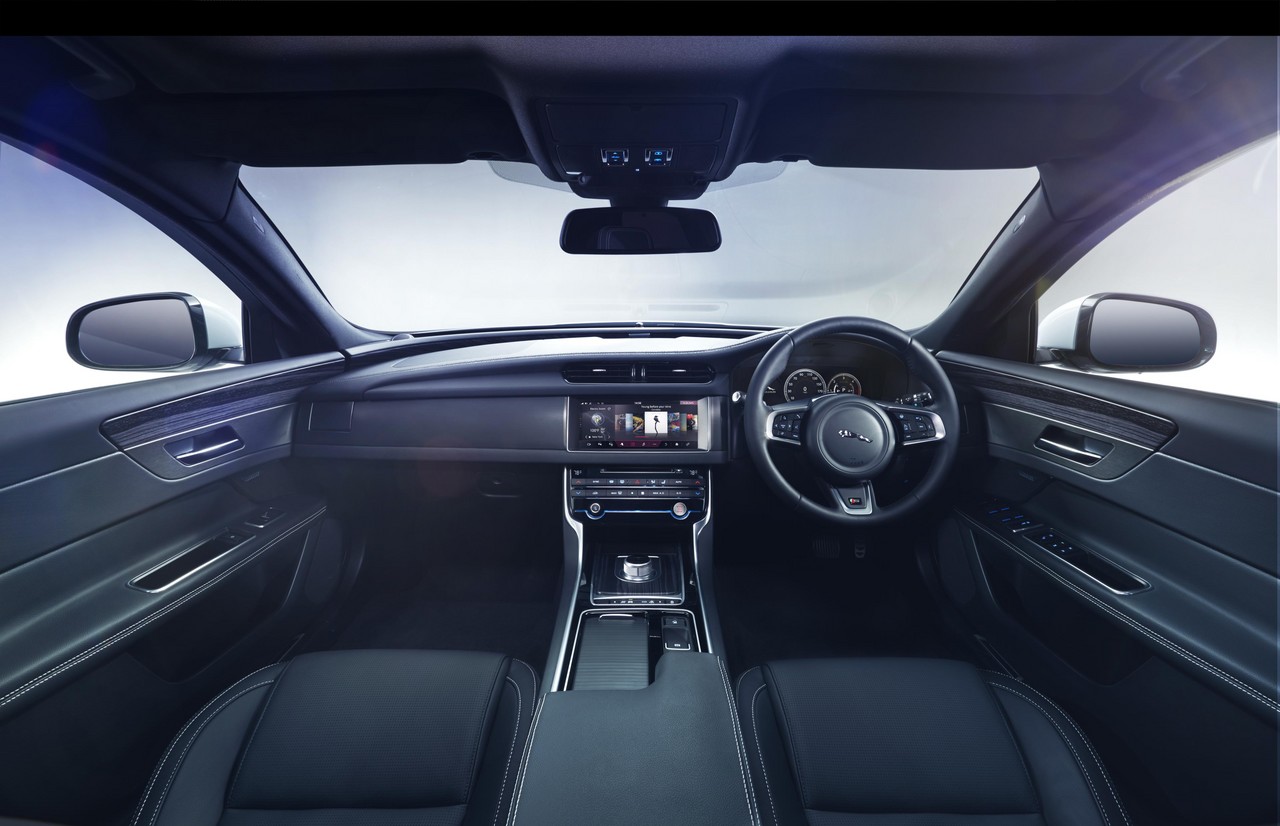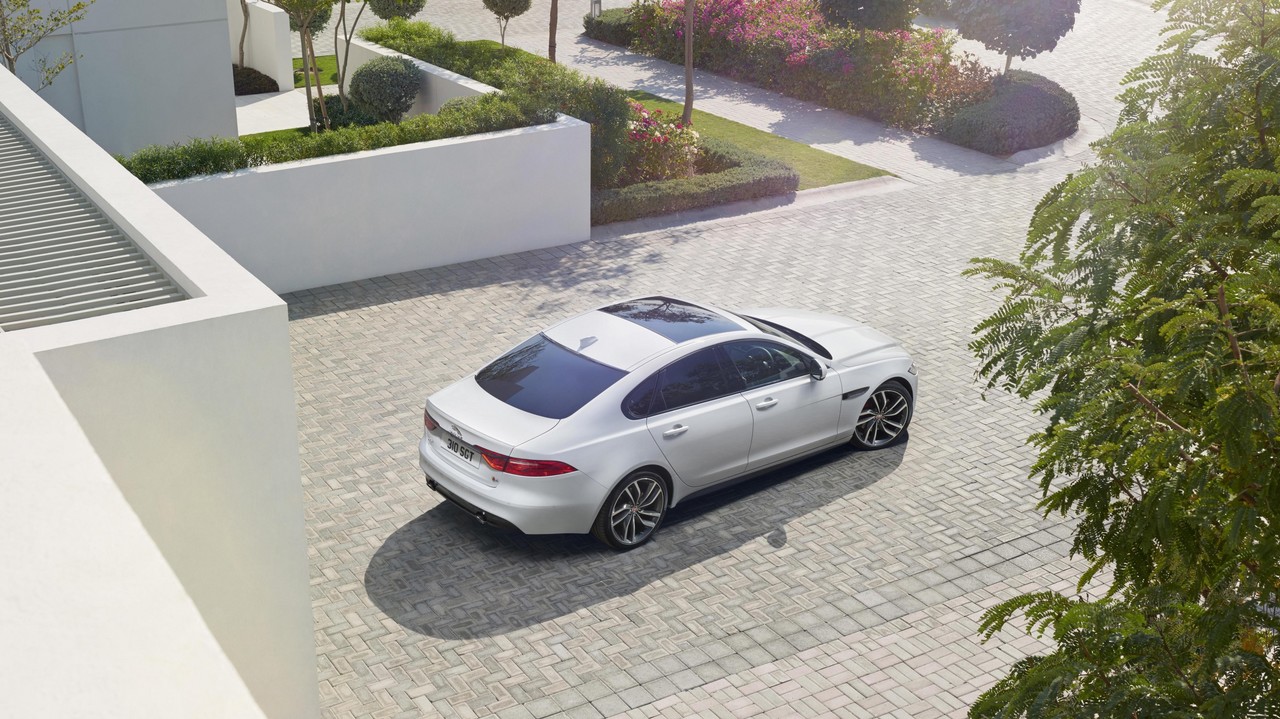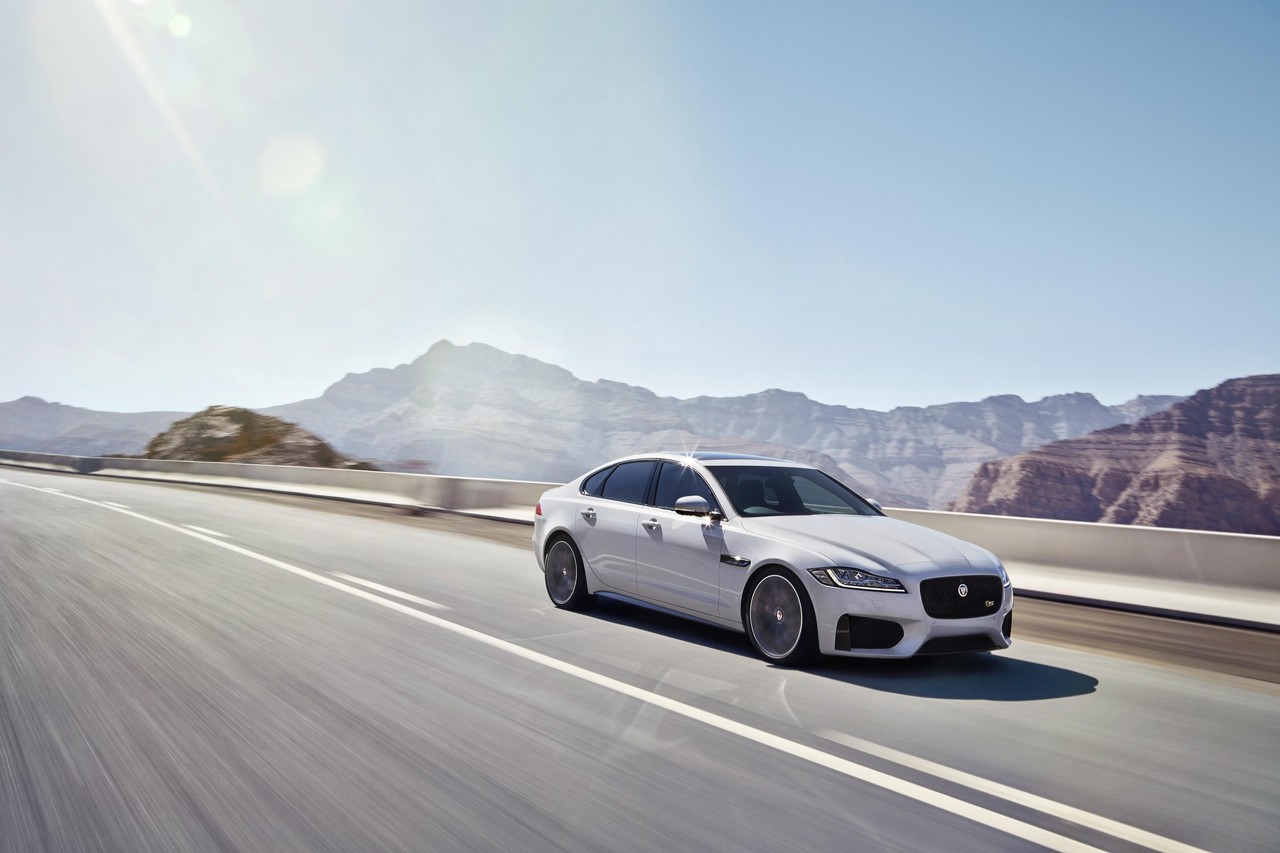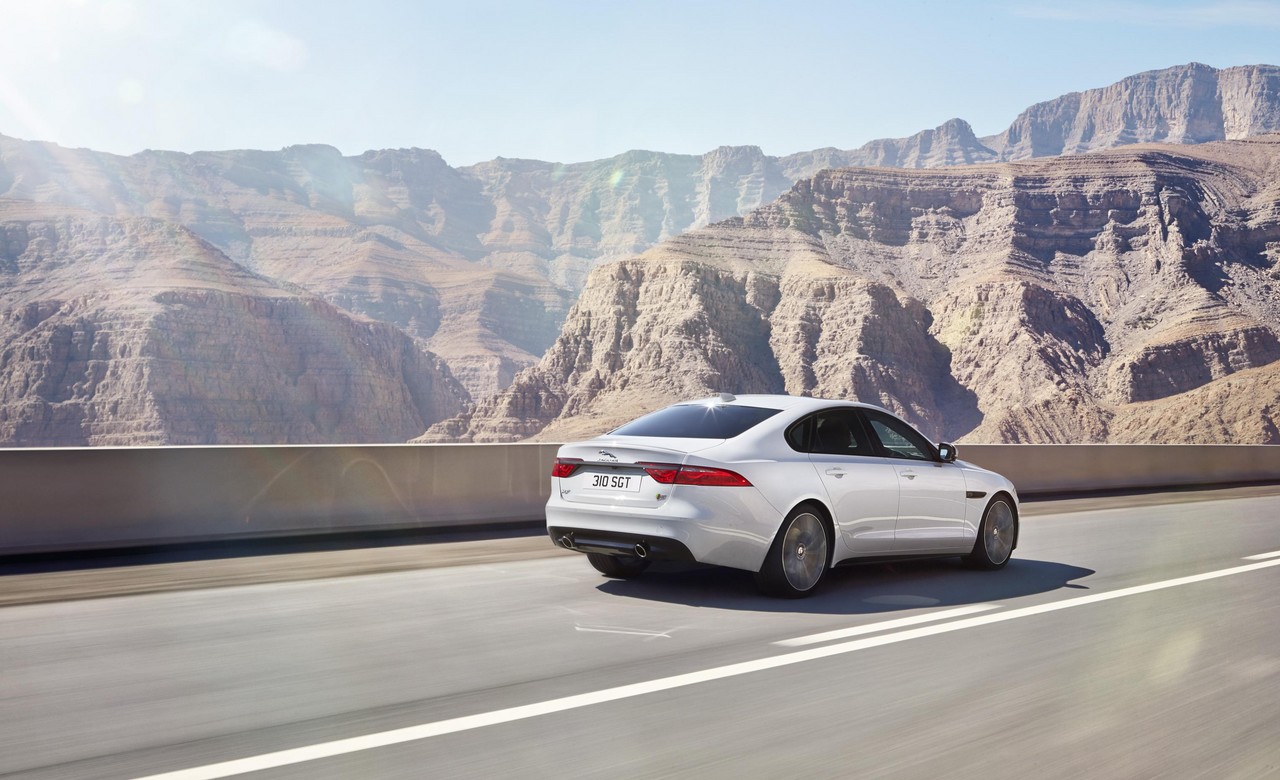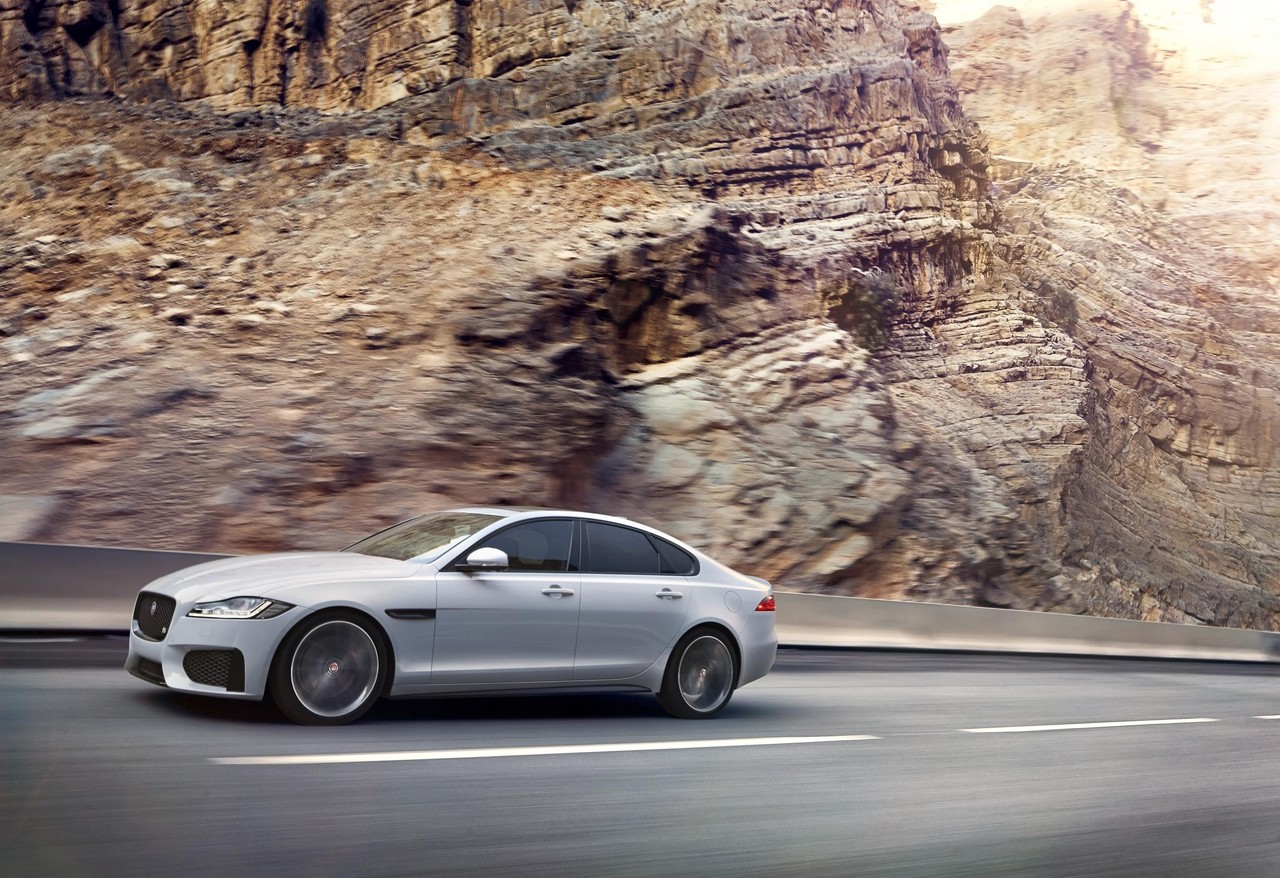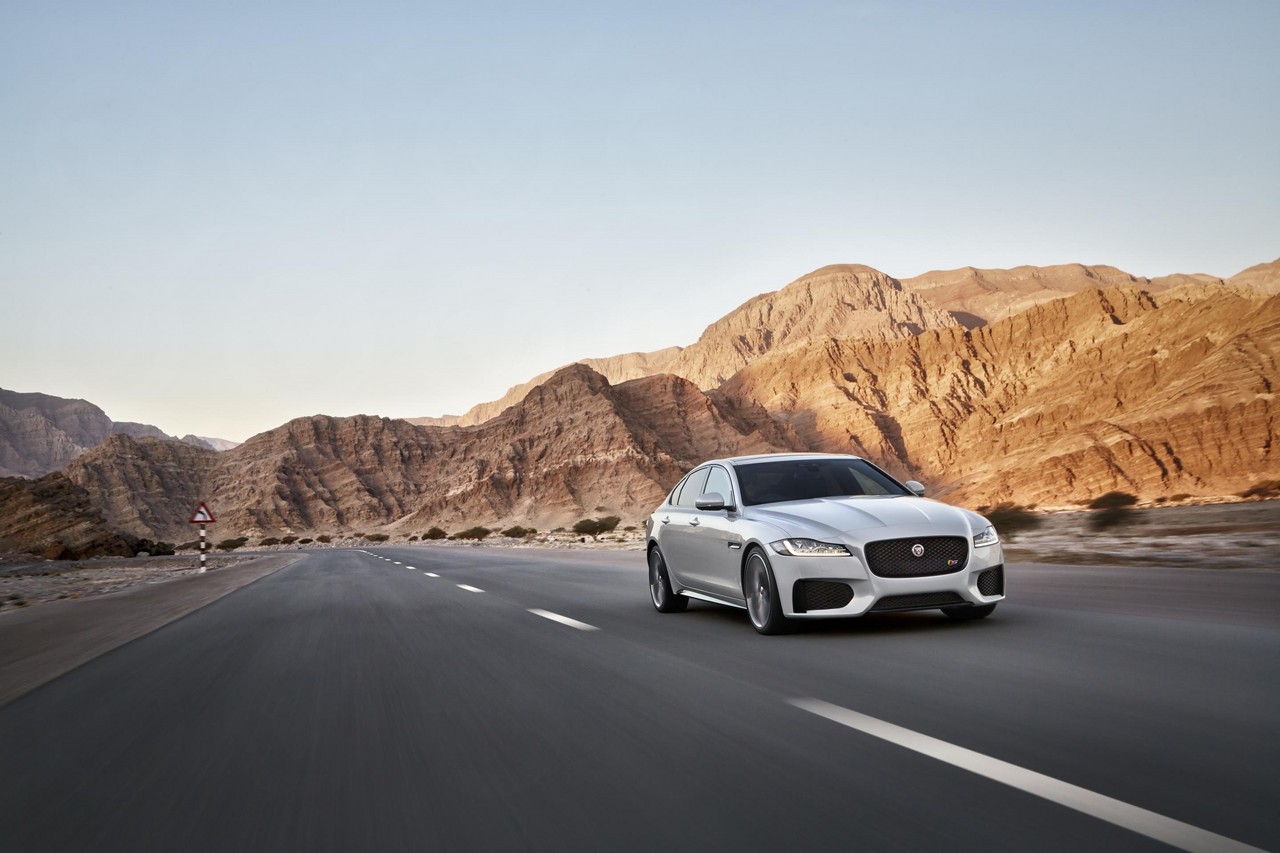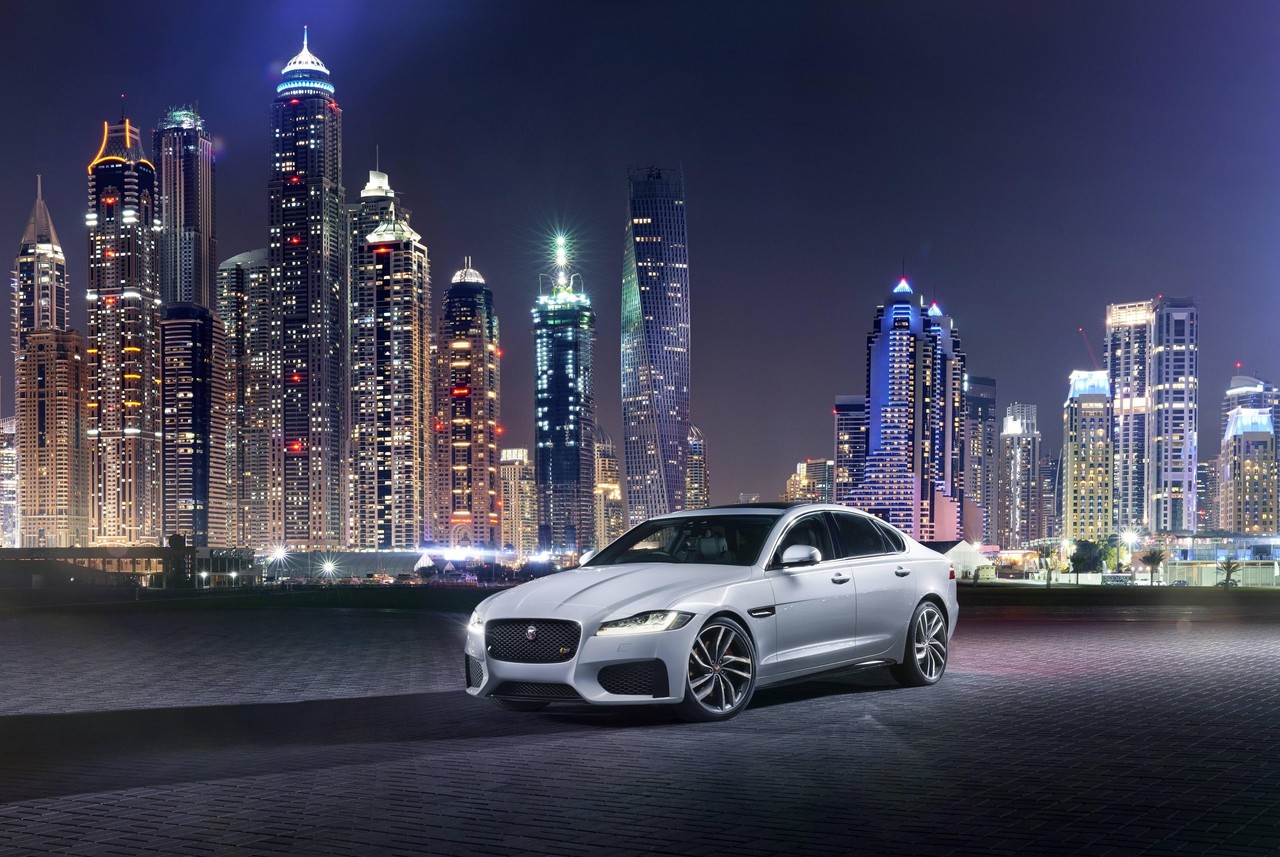
- Modern, fuel-efficient ‘Ingenium’ engines
- Impressive dynamics and a supple ride
- Direct and well-weighted steering
- Refined eight-speed ZF automatic transmissions
- Large boot
- Idle noise and vibration from ‘Ingenium’ diesel engine when cold
- Disruptive stop-start system
- Interior finishes fall short of BMW G30 5-Series and Audi C7 A6
Overview
Commencing production in September 2015, the Jaguar X260 XF was an executive, rear-wheel drive sedan. Manufactured at Jaguar Land Rover’s Castle Bromwich Plant in Birmingham, UK, the X260 XF was available with 2.0-litre turbo-diesel, 3.0-litre twin-turbo diesel, 2.0-litre turbocharged petrol and 3.0-litre supercharged V6 petrol engines (see table below).
Ingenium and V6 engines
The four-cylinder petrol and turbo-diesel engines were from Jaguar’s ‘Ingenium’ engine family and featured deep-skirt aluminium cylinder blocks with thin-wall, press-fit cast iron liners. Of the Ingenium engines,
- The 2.0-litre diesel engines had offset cylinder bearings, common-rail injection operating at up to 1800 bar, a single variable geometry turbocharger, double overhead camshafts with roller bearings, four valves per cylinder, a cam phaser for variable exhaust valve timing, compression ratios of 15.5:1, exhaust gas recirculation (EGR), selective catalytic reduction (SCR) systems, split-cooling systems and twin counter-rotating balancer shafts; and,
- The 2.0-litre turbocharged petrol engines had direct petrol injection operating at 150 bar, a single scroll turbocharger, double overhead camshafts, four valves per cylinder, variable intake and exhaust valve timing, compression ratios of 10.0:1 and twin counter-rotating balancer shafts.
Of the V6 engines,
- The 3.0-litre diesel engine had a compacted graphite iron (CGI) cylinder block, an aluminium alloy cylinder head, common-rail injection operating at up to 2000 bar through eight-hole nozzles, sequential turbochargers, double overhead camshafts, four valves per cylinder and a compression ratio of 16.1:1. Of the turbochargers, the primary turbocharger had ceramic ball bearings which reduced friction and provided more rapid boosting. For emissions control, the 3.0-litre diesel engine also had exhaust gas recirculation (EGR) and a selective catalytic reduction (SCR) system;
- Shared with the F-Type Roadster and F-Type Coupe , the 3.0-litre V6 petrol engine had an aluminium alloy block and cylinder head, a twin-vortex Roots-type supercharger, direct injection, double overhead camshafts per cylinder bank, fully variable valve timing, four valves per cylinder, a compression ratio of 10.5:1 and a single balancer shaft; and,
- Introduced from April 2017 production, the 184 kW Ingenium petrol engine differed in that it had continuously variable intake valve lift, direct injection operating at 200 bar and the exhaust manifold was integrated with the cylinder head casing.
| Variant | Edition | Engine | Years | Trans. | Peak power | Peak torque |
|---|---|---|---|---|---|---|
| 20d | Prestige, R-Sport |
2.0-litre turbo- diesel I4 |
2015-on | 8sp auto | 132 kW at 4000 rpm | 430 Nm at 1750-2500 rpm |
| 25d (TBC for Aus) |
Prestige, R-Sport |
2.0-litre twin turbo diesel | 2017-on | 8sp auto | 177 kW at 4000 rpm | 500 Nm at 1500 rpm |
| 25t | Portfolio, R-Sport |
2.0-litre turbo petrol I4 |
2015-17 | 8sp auto | 177 kW at 5500 rpm | 340 Nm at 1750-4000 rpm |
| 2017-on | 8sp auto | 184 kW at 5500 rpm | 365 Nm at 1200-4500 rpm | |||
| 35t | Portfolio, R-Sport |
3.0-litre super charged petrol V6 | 2015-on | 8sp auto | 250 kW at 6500 rpm | 450 Nm at 4500 rpm |
| S | N/A | 3.0-litre twin-turbo diesel V6 | 2015-on | 8sp auto | 221 kW at 4000 rpm | 700 Nm 4000 rpm |
| 3.0-litre super charged petrol V6 | 2015-on | 8sp auto | 280 kW at 6500 rpm | 450 Nm at 4500 rpm |
ZF HP45 transmission
For Australia, the Jaguar X260 XF was fitted with eight-speed ZF 8HP45 automatic transmissions as standard. The transmissions featured a ‘Transmission Idle Control’ function which, when the vehicle was stationary and the brakes were applied, opened a brake inside the transmission to reduce drag losses and fuel consumption. For engines other than the supercharged V6, the automatic transmissions had a pendulum damper in the torque converter to absorb low frequency vibrations.
Body and dimensions
The Jaguar X260 XF was based on an extended version of the ‘aluminium-intensive architecture’ that underpinned the Jaguar X760 XE . It is understood that seventy-five (75) per cent of the architecture consisted of high-strength, 5000- or 6000-series aluminium alloys and, relative to the X250 XF , provided:
- A 28 per cent increase in torsional rigidity;
- A mass reduction of 190 kg; and,
- A near 50:50 front:rear weight distribution.
This architecture also underpinned the Jaguar X761 F-Pace .
Compared to the Jaguar X250 XF , the X260 XF was 7 mm shorter (at 4954 mm), 3 mm wider (1880 mm), 3 mm lower (at 1457 mm) and had a 51 mm longer wheelbase (2960 mm). Furthermore, the X260 XF had a drag coefficient of 0.28 Cd.
Steering and suspension
The Jaguar X260 XF had electric power-assisted steering (EPAS), double wishbone front suspension and an ‘Integral Link’ rear axle. As standard, the XF was fitted with passive dampers provided frequency-dependent damping whereby damping force could be varied with both the velocity and frequency of the damper piston – this was achieved through the presence of an extra valve in the damper piston which provided an additional bypass. For example,
- At lower driving speeds, the valve was open to allow some fluid to flow through it instead of the main valve in the piston – this reduced damping forces for a more compliant ride; and,
- At higher driving speeds, the valve closed to force all of the fluid to pass through the piston, increasing damping force and providing a firmer ride.
As standard, the Jaguar XF S was fitted with Jaguar’s ‘Adaptive Dynamics’ electronically-controlled dampers which continuously monitored driver inputs and vehicle attitude, adjusting damper rates up to 500 times a second to control vertical body movement, roll and pitch. As an option on X260 XF models with V6 engines, Jaguar’s ‘Configurable Dynamics’ enabled the driver to individually tailor settings of the dampers, steering, engine and eight-speed automatic transmission.
Safety equipment
Standard safety equipment for the Jaguar XF included dual front airbags, front side airbags, full-length curtain airbags, ABS, electronic brake force distribution, brake assist, electronic stability control, traction control and front seatbelts with pretensioners and load limiters.
As standard, the Jaguar XF was fitted with a stereo camera – mounted in front of the rear view mirror – which provided a 3D view of the road up to 100 metres ahead. At speeds up to 80 km/h, the autonomous emergency braking (AEB) system used this information to detect if a collision is imminent and, if so,
- Pre-charged the braking system;
- Warned the driver via a visual warning in the instrument cluster (and head-up display where fitted); and,
- If the driver failed to respond, initiates emergency braking to avoid or mitigate a collision.
The Jaguar XF was also fitted with a Lane Departure Warning (LDW) system which could monitor the vehicle’s position relative to lane markings and warn the driver if the vehicle was about to drift from its lane by providing a visual warning in the instrument panel and steering wheel vibrations.
Optional, extra-cost safety technologies for the Jaguar XF included:
- Adaptive Cruise Control (ACC) with Queue Assist: ACC used a long-range 77 GHz radar to maintain a safe distance from the vehicle ahead with automated braking. Furthermore, Queue Assist enables the XF to track the vehicle in front by accelerating from a standstill;
- Driver Condition Monitoring: monitors driver behaviour for signs of fatigue and provides multi-stage warnings in the instrument panel recommending the driver take a break;
- Closing Vehicle Sensing: uses 24 GHz radar sensors to alert the driver to vehicles quickly approaching from behind, once they are within 70 metres, by displaying an icon the in the instrument panel;
- Reverse Traffic Detection: uses the same 24 GHz radar to detect approaching vehicles that may cross the reversing driver’s path; and,
- Lane Keep Assist (LKA): an extension of the Lane Departure Warning, LKA can apply a small amount of counter-steering to direct the vehicle back into its lane.
From April 2017 production, the Jaguar XF was available with:
- Blind Spot Assist (BSA): enhanced the existing Blind Spot Monitor system by using the collision warning system in conjunction with the electric power steering system. If BSA detected a vehicle that was in the driver’s blind spot or approaching the blind spot when the driver was changing lanes, a gentle steering force would be applied to keep the vehicle in its lane;
- Forward Traffic Detection: using a forward-facing camera that was mounted in the grille, Forward Traffic Detection sought to assist the driver when forward visibility was restricted by detecting items that may cross the vehicle’s path. If a hazard was detected, a visual warning would be provided on the central screen; and,
- Forward Vehicle Guidance: working in conjunction with the front parking sensors, Forward Vehicle Guidance provided a visual representation of the vehicle that was overlaid with wheel projections showing the alignment of the steering. Furthermore, drivers could see the parking distance displayed on the central screen.
For pedestrian protection, the Jaguar XF’s bonnet had a deployable hinge system which could create additional clearance between the underside and hard objects such as the engine, suspension towers and bulkhead.
Euro NCAP testing
In Euro NCAP testing , a 2015 Jaguar X260 XF with a 2.0-litre turbo-diesel engine received a five star safety rating which included a 92 per cent adult occupant protection rating and an 84 per cent child occupant protection rating. In the frontal offset test, protection of the driver’s head, thighs and feet were rated as good, though chest and lower left leg protection were rated as adequate (i.e. a slight risk of serious injury). While occupant protection was rated as good for all areas in the side impact test, a one point deduction was made because both doors on the impacted side of the vehicle became unlatched during the test. Maximum points were awarded, however, in the pole test.
All Surface Progress Control and Torque Vectoring
As standard, the Jaguar XF wass fitted with Jaguar’s ‘All Surface Progress Control’ (ASPC) system. ASPC could maintain vehicle speed between 3.6 km/h and 30 km/h in low traction conditions by controlling the brakes and throttle for provide optimum traction – this enables the driver to concentrate on steering the vehicle.
The Jaguar XF also had a ‘Torque Vectoring by Braking’ function which, upon corner entry, applied light braking to the inner wheels (individually) to mitigate understeer.
Features: Jaguar XF Prestige
Standard features for the Jaguar Prestige included 18-inch five-spoke alloy wheels, Jaguar’s ‘InControl Touch’ infotainment system with an eight-inch touchscreen, SD card-based satellite navigation with 2D and 3D maps, auxiliary inputs (3.5 mm/USB/iPod), voice control, a 380 watt Meridian sound system with eleven speakers and subwoofer, Bluetooth mobile phone connectivity and audio streaming, Taurus leather faced seats, ten-way power adjustable front seats with four-way adjustable lumbar support, dual-zone climate control air conditioning, xenon headlights with daytime running lights, front and rear parking sensors, a rear view camera, 40:20:40 split and folding rear seats, remote central locking with proximity key (i.e. keyless entry), power adjustable and heated door mirrors with folding function, power windows, a power adjustable steering column, auto-dimming rear view mirrors, driver memory settings (for the seat, steering column and door mirrors), push-button start, mood lighting, tyre pressure monitoring, a trip computer, an alarm and immobiliser.
The XF Prestige was also fitted with Jaguar’s ‘Park Assist’ which provides automated steering for parallel parking, bay parking and when exiting from parking spaces.
Features: Jaguar XF Portfolio
Compared to the XF Prestige, the XF Portfolio was further equipped with 19-inch ‘Razor’ alloy wheels, Windsor leather faced seats, adaptive LED headlights with washers, automatic high beam assist and a surround camera system. Unique within the range, the XF Portfolio was also fitted with illuminated tread plates and a power-operated boot lid.
Features: Jaguar XF R-Sport
Relative to the XF Prestige, the XF R-Sport added 19-inch ‘Vortex’ alloy wheels, sports suspension, combination Taurus leather and ‘Tech Mesh’ faced seats.
Features: Jaguar XF S
Compared to the XF Prestige, the XF S added 19-inch ‘Blade’ alloy wheels (gloss grey and diamond turned), combination Taurus leather and suede cloth faced seats, adaptive LED headlights with washers, automatic high beam assist and a surround camera system.
April 2017 update (‘2018 model year’)
From April 2017 production,
- The Jaguar XF could be specified with Jaguar’s ‘Configurable Dynamics’ as a standalone feature; Configurable Dynamics enabled the driver to adjust settings for steering assistance, throttle response and transmission behaviour;
- Jaguar ‘Gesture Boot Lid’ was available on XF vehicles with keyless entry and rear parking sensors. The Gesture Boot Lid enables the driver to open and close the boot by waving their foot under either side of the rear bumper;
- The Jaguar XF could be specified with a 12.3-inch TFT instrument cluster with full-screen navigation and 3D maps; and,
- A ‘Dual View’ screen was introduced for the InControl Touch Pro multimedia system. The Dual View screen enabled the driver and front passenger to view different infotainment displays from the central ten-inch touchscreen.
2019 update
From early 2019, the Jaguar XF was equipped with a new ‘Smartphone Pack’ as standard which included Apple CarPlay and Android Auto smartphone integration.
2019 Jaguar XF Chequered Flag edition
In February 2019, ‘Chequered Flag’ editions of the Jaguar XF were released. Visually, the Jaguar XF Chequered Flag edition could be identified by its sport front bumper, 18-inch ‘Chalice’ alloy wheels finished in Gloss Black, Black Pack, side vent badges and body-coloured side sills. The Jaguar XF Chequered Flag editions were available in three paint colours: Yulong White, Santorini Black and Eiger Grey.
Inside, the Jaguar XF Chequered Flag editions featured R-Sport full leather seats, ‘Chequered Flag’ treadplates, a ‘Dark Hex’ aluminium instrument panel finisher and a choice of Jet/Jet or Jet/Red colour combinations with contrast stitching. Furthermore, standard features were extended to include Jaguar’s Navigation Pro with InControl Connect Pro for live traffic updates, a 12.3-inch Interactive Driver Display and keyless entry.
Specifications
Related links
- Jaguar Media: Jaguar XF Revealed
- Wikipedia.org: Jaguar XF
- Behind the Wheel: 2017 Jaguar XF 30d S Review
